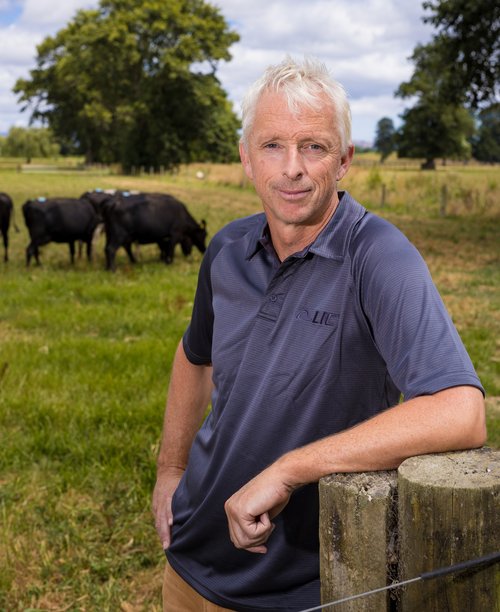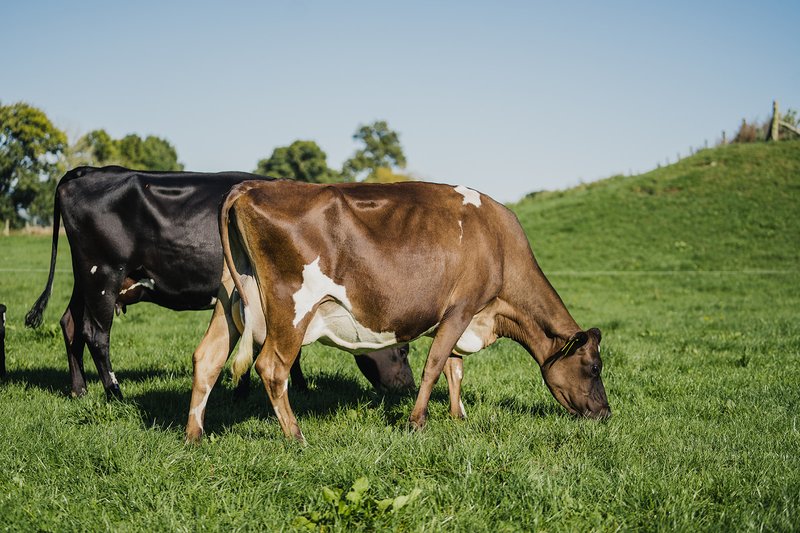Having identified the ‘slick’ variation that gives cows shorter coats and better heat tolerance, Livestock Improvement Corporation (LIC) scientists are now embarking on the next stage of the research; investigating how these slick-coated animals fare in winter.
"It's a balancing act," says LIC Chief Scientist Richard Spelman. "While heat tolerance is crucial, we cannot neglect the animals' ability to withstand colder temperatures. Before we offer heat tolerant genetics to farmers, we need to understand the slick animals’ response to cold conditions, from the more-tropical north of New Zealand to the colder south."

The cold sensitivity trials involve exposing slick and non-slick calves to cooler temperatures in a controlled setting, replicating the conditions they would naturally encounter when born during a typical New Zealand winter. The animals’ core body temperature is recorded and compared during the trial and again once they’ve re-acclimated afterwards.
Preliminary results show slick calves exhibit similar responses to that of non-slick calves, which suggests that animals with the slick gene do not have compromised welfare in cold conditions.
Spelman comments: “These results are promising for the future suitability of the slick variation across New Zealand and are another step towards us being able to offer farmers the ability to breed heat tolerant cows in the near future.”
These cold sensitivity trials are undertaken at LIC's Innovation Farm in Waikato, New Zealand, and carried out in collaboration with Lincoln University. Lincoln researchers are conducting similar observational studies on calves exposed to natural temperature variations at their South Island campus.
The trials come under LIC’s wider heat tolerance research – initiated by LIC in 2014 when its scientists first discovered the slick gene. The research also includes a slick breeding programme, and separately, a study to better understand heat stress on animals and the on-farm impacts.
Cows generally experience heat stress on days exceeding 22°C with 75% humidity. This is a concern as NIWA predicts that by the end of the century, the frequency of ‘hot days’ (maximum temperatures at least 25°C) doubles under modest modelling scenarios. This stress has significant implications for dairy animal welfare, fertility, and milk production, causing cows to seek shade, drink more, and eat less.
The slick breeding programme initially crossed Senepol, a Caribbean beef breed carrier of the slick gene, with New Zealand dairy cattle. These animals now consist of approximately 3% Senepol and 97% New Zealand dairy and carry the slick variation. Researchers assess the offspring's milk production and body condition score, contrasting them with non-slick cows.

The programme has found cows with the slick variation have lower rumen temperatures (0.5-1.0°C) compared to non-slick cows under certain temperature and humidity conditions. Spelman said although a one-degree temperature decrease doesn’t sound significant, it goes a long way to helping cows feel cooler overall.
“Our goal is to provide farmers with heat tolerant genetics that equip these cows for the challenges of a changing climate, while ensuring they have the high genetic merit and milk production that is expected of New Zealand dairy cows,” says Spelman.
Spelman said the next step is to undertake a round of mating this spring, pairing slick bulls with high genetic merit cows across the country. “Assuming progress continues as planned, Kiwi farmers will be able to breed heat tolerant cows by 2029.”
The heat tolerance research is part of LIC’s focus to help Kiwi dairy farmers retain their position as the most efficient milk producers in the world. Each year LIC invests around $18 million into research and development, making the co-operative one of the country’s largest private investors in R&D for the primary sector.




